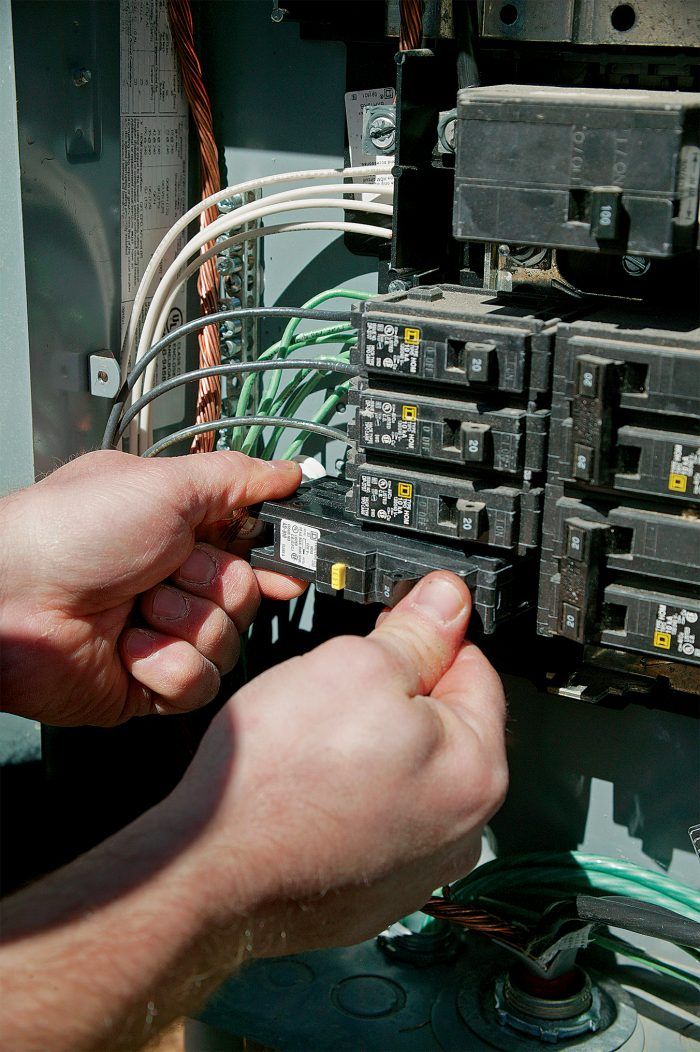Making Sense of Circuit Breaker Test Buttons
AFCI and GFCI breakers that protect against arc faults and electrocution have specialized test buttons in different colors.

I tripped a breaker by running too many power tools, and when I opened the door of the breaker panel to reset it, I saw breakers with several different color “test” buttons, and a few with no test button at all. We’re in a new home, and this is a very different situation than our previous one. Why test buttons, and what are the different colors?
—Rob W., Wooster, Ohio
Sacramento electrician Cliff Popejoy replies: Several types of circuit breakers have test buttons, and the color indicates what kind of breaker it is. First, the basics: a standard breaker has a handle and no test button. It’s a thermal-magnetic breaker.
Any circuit breaker is designed to protect from carrying too much current relative to the capacity of the wire. Too much current (or flow of electrical energy) can happen if too many things are connected to the circuit and using power; this is called an overload. Overloads can cause the wire to overheat enough to cause a fire.
Another situation where too much current flows is when there’s a problem or fault, like the supply wire touching the return wire (or the ground wire or something grounded). This is called a short circuit or ground fault. If too much current flows, the wires can heat up and start a fire.
Also, if there’s a short circuit or ground fault, sparking can happen, which may cause a fire. So a standard breaker will trip on overload, or sometimes if there’s a short or ground fault.
Sometimes, short circuits or ground faults cause an arcing fault, which is a sparking kind of fault. Usually an arc fault won’t trip a standard breaker. To handle this, the arc fault circuit interrupter (AFCI) breaker was developed. These breakers sense an arcing fault and cut the power. Second generation AFCI breakers, which detect two different kinds of arcing faults, are now required in new construction. These are called combined AFCI, or CAFI breakers.
Special breakers that protect against shock or electrocution, called ground fault circuit interrupters or GFCIs, are also available. These do the same thing as a GFCI receptacle, the ones used in kitchens, bathrooms, and outside outlets to protect you where the chance of electricity and water mixing are high.
The type of special breaker is marked on the breaker (usually in very fine print). Each kind of special breaker has a test button. The manufacturers of circuit breakers make the test buttons different colors. There is no standard, so the color is different for different brands of breakers.
Any time a breaker trips, you need to figure out why and address the cause before resetting the breaker. If it’s an overload, your clue is that there was a lot of stuff plugged into the circuit and drawing power at the same time. If this happens regularly, having an electrician add a new circuit is the best way to address the problem. A trip due to a short or ground fault is sometimes caused by as problem in an extension cord or appliance or tool, so unplug the items on the circuit and reset the breaker. If it trips, it’s time to call an electrician.
RELATED LINKS





